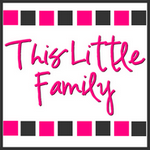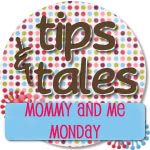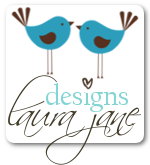There are so many great reasons to teach your kids sign lanuage. I recently was sent this great article which explains all the benefits of teaching infants, toddlers and preschoolers sign language and I really wanted to pass it along.
Early Childhood Education – Acquiring Sign Language
One of the keys to surviving in a tilted economic system in which opportunities to achieve a decent standard of living will be limited is versatility – and the ability to communicate articulately in a variety of ways with the widest possible audience. This includes bilingual ability as well as the ability to communicate in non-verbal ways for the benefit of the disabled – primarily the deaf.
At the same time, a growing shortage of qualified interpreters fluent in American Sign Language has led to more career opportunities – and if current trends continue, it's likely that skilled ASL interpreters will have little problem securing lucrative employment in a society where such a commodity is destined to be in short supply.
Signing Before They Can Speak
A great deal of research has clearly demonstrated that the early years – ages 2 to five – are the best time to educate children in different modes of communication and language. This goes beyond the spoken word (though it is an optimal time for children to learn a second language); many young children have an aptitude for signing as well.
This is not as odd as you may think. As you know, many indigenous peoples around the world, including American Indian nations, have used sign language for centuries to facilitate communication with other tribes with whom they do not share a language. Some paleontologists and anthropologists theorize that Neanderthals – who apparently lacked the vocal mechanism to produce many spoken words – depended a great deal upon hand gestures to communicate.
In fact, recent research suggests that sign language is innate. An article published in the Boulder Daily Camera in 2003 presented strong evidence that babies as young as six months old communicate with their hands:
"...by 6 to 7 months, babies can remember a sign. At eight months, children
can begin to imitate gestures and sign single words. By 24 months, children
can sign compound words and full sentences. They say sign language reduces
frustration in young children by giving them a means to express themselves
before they know how to talk." (Glarion, 2003)
The author also cites study funded by the National Institute of Child Health and Human Development demonstrating that young children who are taught sign language at an early age actually develop better verbal skills as they get older. The ability to sign has also helped parents in communicating with autistic children; one parent reports that "using sign language allowed her to communicate with her [autistic] son and minimized his frustration...[he now] has an advanced vocabulary and excels in math, spelling and music" (Glarion, 2003).
The Best Time To Start
Not only does early childhood education in signing give pre-verbal youngsters a way to communicate, it can also strengthen the parent-child bond – in addition to giving children a solid foundation for learning a skill that will serve them well in the future. The evidence suggests that the best time to start learning ASL is before a child can even walk – and the implications for facilitating the parent-child relationship are amazing.
Co-written by Emily Patterson and Kathleen Thomas
Emily and Kathleen are Communications Coordinators for the Zionsville educational child care facility, a member of the AdvancED® accredited family of Primrose Schools (located in 16 states throughout the U.S.) and part of the network of Indiana educational day care preschools delivering progressive, early childhood, Balanced Learning® curriculum.
Here are a few great words to start with:
 |
| More |
 |
| Finished |





































I sign with my little one, I think this is great. I didn't follow thru though, so he lost it a few months ago when we started focusing more on saying the word since he was refusing to sign and say the word at the same time. The doctor was concerned about his speech, while I whole heartedly believe sign language develops a child's speech, in our case little J would sign the word, but not repeat after me saying the word. So we abandoned the concept...now he says around 20 words at 17 months. Sign language is a great tool, and I think everyone should use it. :)
ReplyDeleteHeather from Mommy Only Has Two Hands!
WOW, funny. We just did a blog on Sunday about signing time with your baby/kids! Weird! So much good info and becoming so popular now a days. Riley and Tyler are signing so much. I think Tyler is signing 15 words and Riley is about 5! I started putting it on for Riley at 3 months and he still loves baby signing time!!
ReplyDeleteThanks so much. We are learning ASL this year in home school so this will help! 8)
ReplyDeleteWe recently started teaching Gunne some sign langauge. He picked up milk right away, but has a LOT of trouble with some of the others. His mothor skills are just not there yet, I'm afraid.
ReplyDelete